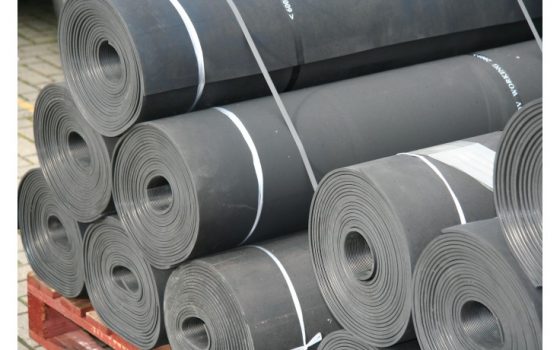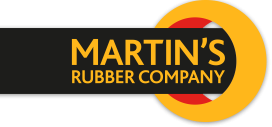Green Rubber – does recycled rubber have a future?
Posted on 28/02/2013 Category: Technical Features

If you had asked me that just a couple of years ago, I would have had to say – recycled rubber, not really……
Yes, Natural Rubber is literally natural, in that this remarkable material is still “tapped” from a tree trunk (Hevea Brasiliensis) and processed to become the base material for many blends of compound, while the “modern” synthetic rubber types are all manufactured by various chemical processes. However, both types of “Rubber” have one thing in common – they are “Thermoset” materials. This means that the curing process (as opposed to the melting & cooling process used in Thermoplastics) called Vulcanisation results in a permanent change in the molecular structure of the rubber, by cross linking the molecular bonds, thus producing the “elastic” properties that make these materials so unique. However, this also makes it very difficult to produce an effective recycled rubber. Once a part is cured, it cannot be melted down and recycled into a new part in the same way as plastics can be, and that is why rubber is often a big problem when it comes to the end of its service life. Indeed, used car and truck tyres alone create something like 250 million worn out products globally a year. This material is difficult to break down and dispose of, so historically, much of it has ended up in landfill, with all the problems that poses. Because of this there have been a number of attempts over the years to develop methods of de-vulcanising rubber in order to be able to recycle the material and create new parts with performance approaching that of the original virgin material. Methods have included mechanical grinding or shredding, high pressure water abrasion, chemical soaking, as well as microbiological consumption for example, and there have been mixed results from all these initiatives. I don’t really count grinding cured rubber down into crumb and using it as a filler, or making playing field surfaces out of resin bonded crumb to be true recycling as such, as that is not really restoring the material to a pre-cured condition so that it can be used to make new rubber components. Now however, there is a very real prospect of being able to properly recycle rubber back into a useful, re-usable material that can create new parts unrelated to the original product. Following our collaboration on a significant UK government supported project, we have helped develop recycled rubber materials that really can be used to make new parts of good quality, and not just from natural rubber. Our process can also recycle Nitrile and EPDM already, with other polymers under development. Not only this, unlike some of the other methods, it is done on a continuous basis so it can be part of a process line, instead of on a batch basis. So, at last we can say that rubber really is a “Green” material with real opportunities for recycling and reduction of its carbon footprint, and this further ensures the future of this wonderful range of materials. If you would like to find out more about rubber recycling, whether for rubber crumb or de-vulcanised material, just ask and we will be pleased to help.
The post Green Rubber – does recycled rubber have a future? appeared first on Martin’s Rubber Company.


